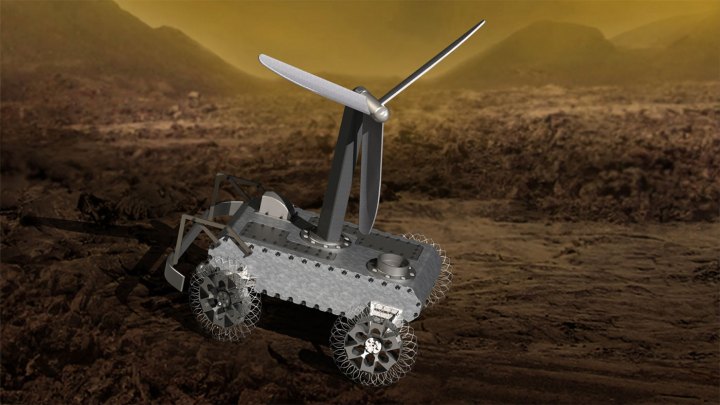
NASA is looking to members of the public to design an avoidance sensor for obstacle courses that could be used for a future Venus rover. Despite being our planetary neighbor, few missions have ever landed on Venus because of its scorchingly high surface temperatures of up to 900 degrees Fahrenheit, as well as surface pressure 90 times that of Earth which is strong enough to turn lead into a puddle.
Still, studying Venus could give scientists valuable insights into how Earth developed. “Earth and Venus are basically sibling planets, but Venus took a turn at one point and became inhospitable to life as we know it,” Jonathan Sauder, a senior mechatronics engineer at JPL and principal investigator for the Automaton Rover for Extreme Environments (AREE) concept, said in a statement. “By getting on the ground and exploring Venus, we can understand what caused Earth and Venus to diverge on wildly different paths and can explore a foreign world right in our own backyard.”
The Automaton Rover for Extreme Environments (AREE) concept aims to develop a wind-powered rover that could spend months on Venus. But to be able to navigate around the terrain, it requires sensors to detect its environment. This is the component that NASA is looking for help designing.
“This is an exciting opportunity for the public to design a component that could one day end up on another celestial body,” said Ryon Stewart, challenge coordinator for the NASA Tournament Lab at the agency’s Johnson Space Center in Houston. “NASA recognizes that good ideas can come from anywhere and that prize competitions are a great way to engage the public’s interest and ingenuity and make space exploration possible for everyone.”
The challenge is to design a sensor that does not rely on electronic systems, as the planet’s surface is so hot it would melt any electronics. “When faced with navigating one of the most challenging terrestrial environments in the solar system, we need to think outside the box,” Sauder said. “That is why we need the creativity of makers and garage inventors to help solve this challenge.”
The first prize concept will win $15,000, with $10,000 for second place and $5,000 for third place. More details about the competition are available on the HeroX website.



